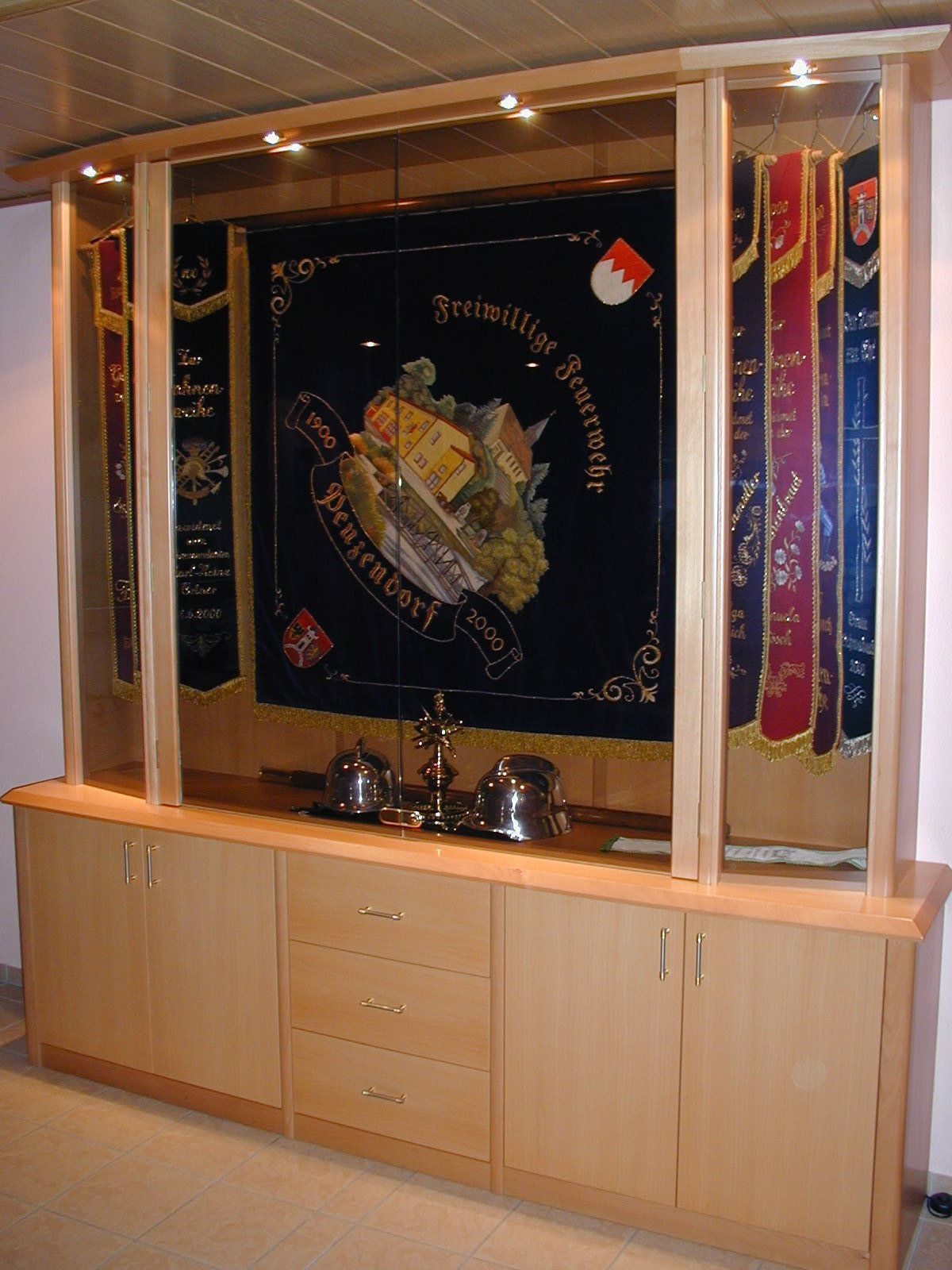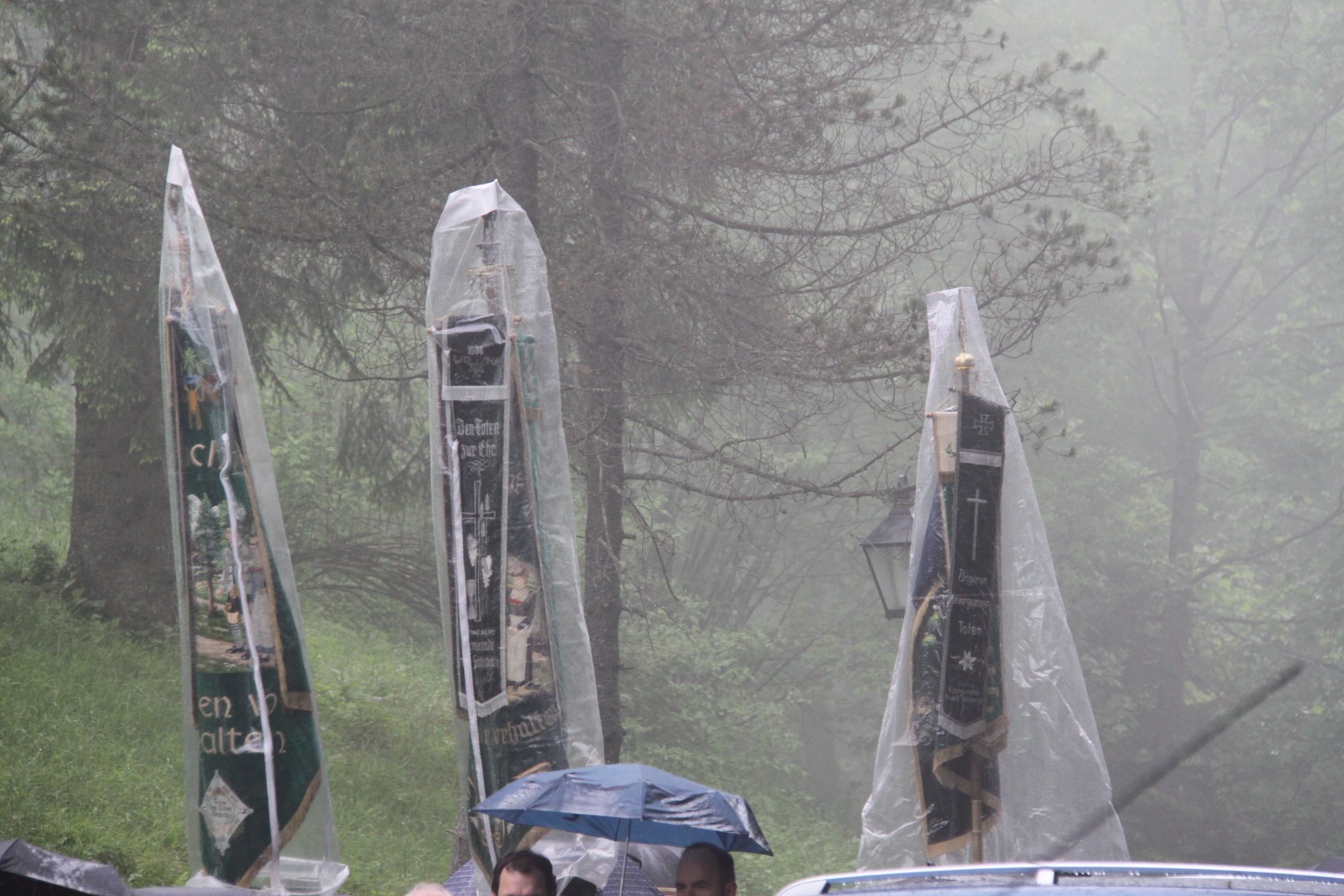Fahnen Kössinger, Feb 04, 2017, 2:19 p.m.
How do I properly maintain my flag?
With the correct storage and maintenance, our flags have a long durabilty, some flags have been in use for decades even without losing much of their beauty. But in order to keep the precious piece thus beautiful, some maintenance regulations have to be followed. This starts with the storage: The ideal place is a wardrobe made of wood that is big enough that the flag can be hung up horizontally on the pole. Wood allows breathing and thus balances fluctuations in the air moisture. It is also possible to use acrylic glass panes protecting against ultraviolet light that are however equipped with respective airgrids on the sides. The flag must not be stored in direct sunlight, ultraviolet light bleaches each fabric out. So, if your wardrobe has a glass pane through which the flag is visible, it must not be placed near a window (there is no danger when you have a wardrobe that is closed).
The biggest enemies of the precious fabric, and a frequent reason for having us restore flags, are moths and mildew. In order to prevent the molesting moths to attach your flag, the wardrobe should be equipped with a close-meshed net. In addition, it would help to hang small sacks with lavender or some pieces of cedar wood in the wardrobe - moths do not like the smell and keep away from the wardrobe. In case you really have moth infestation you may use insecticide sprays - but be careful: The chemicals may be harmful to the fabric, therefore only use them in an extreme case of emergency. Mildew can be avoided by not placing the wardrobe close to a cold wall and providing air supply. If the flag is nevertheless damaged, contact a flag embroidery as quickly as possible - then your flag can be mended and restored in an uncomplicated way at a low price.
The biggest enemies of the precious fabric, and a frequent reason for having us restore flags, are moths and mildew. In order to prevent the molesting moths to attach your flag, the wardrobe should be equipped with a close-meshed net. In addition, it would help to hang small sacks with lavender or some pieces of cedar wood in the wardrobe - moths do not like the smell and keep away from the wardrobe. In case you really have moth infestation you may use insecticide sprays - but be careful: The chemicals may be harmful to the fabric, therefore only use them in an extreme case of emergency. Mildew can be avoided by not placing the wardrobe close to a cold wall and providing air supply. If the flag is nevertheless damaged, contact a flag embroidery as quickly as possible - then your flag can be mended and restored in an uncomplicated way at a low price.


When the flag is wet, maybe after a parade in the rain, it has to be thoroughly dried out before storage. It is best to hang it horizontally in a room that is moderately heated. It should not be too warm, otherwise the fabrics may be harmed. On no account must the flag be hung over a heating or radiator. As soon as it is dry, it should be brushed against the direction of the velvet with a soft brush so that the fabric shows itself in its former beauty. Only when it is completely dry may it be put into the wardrober again. It would, of course, be better if the precious piece got not wet in the first place. In order to achieve this, it should be protected when transported. In the meantime, transparent covers or sacks are available that can also be used during parades and that show the flags nicely to their advantage. Also when transported, a flag should never be rolled up but only slightly folded. That's because it consists of several layers of fabric, and rolling them might cause tension and damage.
It is self-evident that flags have to be treated carefully and protected against stains. It is not possible to wash flags made of velvet, pure silk, half silk (diagonal), cotton-damask, or flag rep, and they must not be dry-cleaned either. Sand and dust may be knocked out carefully. But stains must never be rubbed in or treated with detergents. Rather contact the specialists in our embroidery.
back to the blog survey >
back to the blog survey >

 English
English  Deutsch
Deutsch